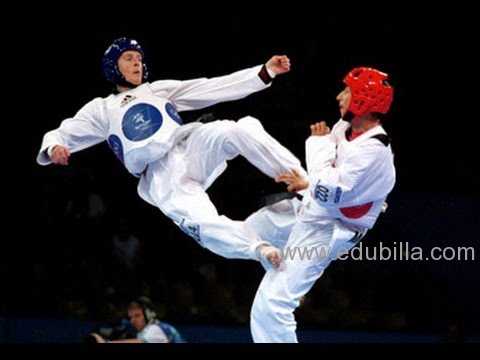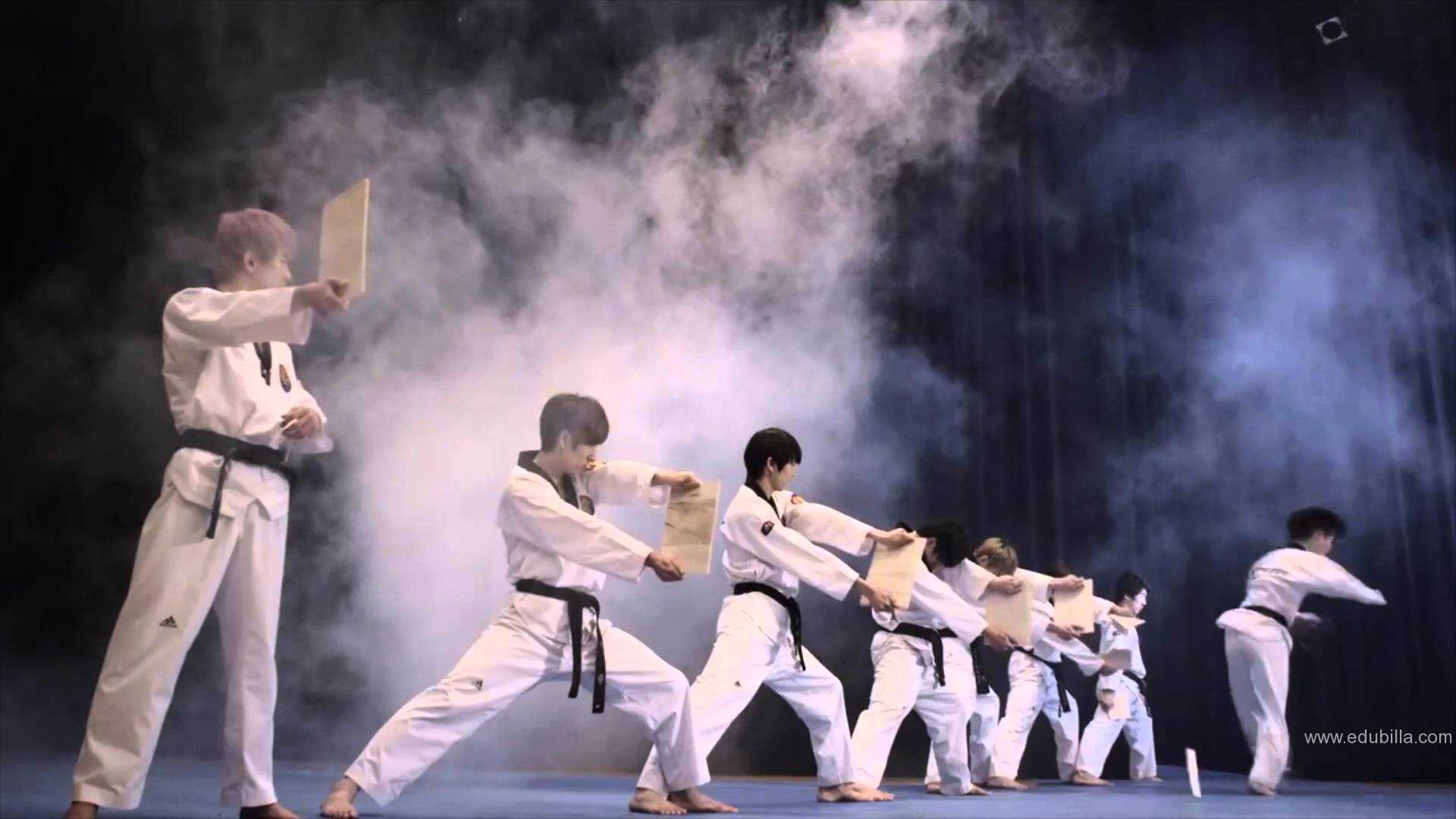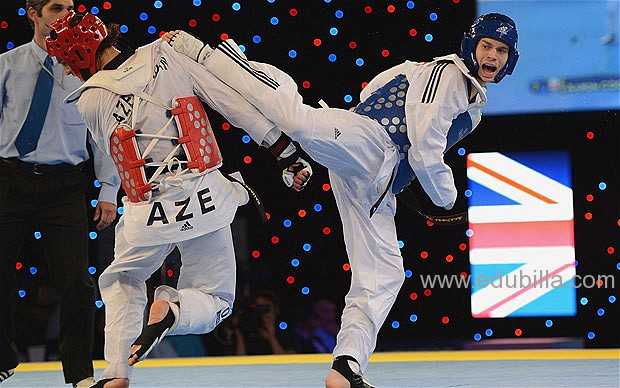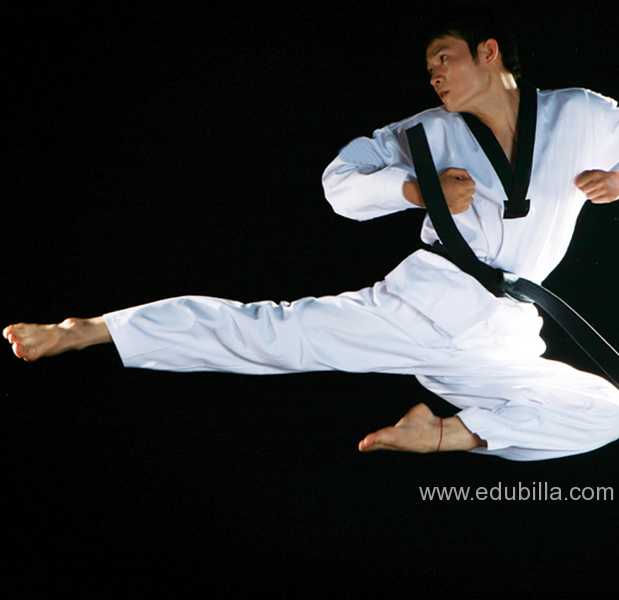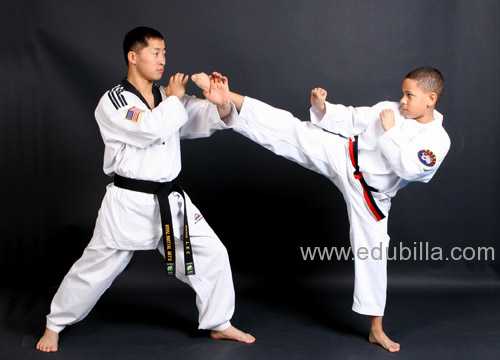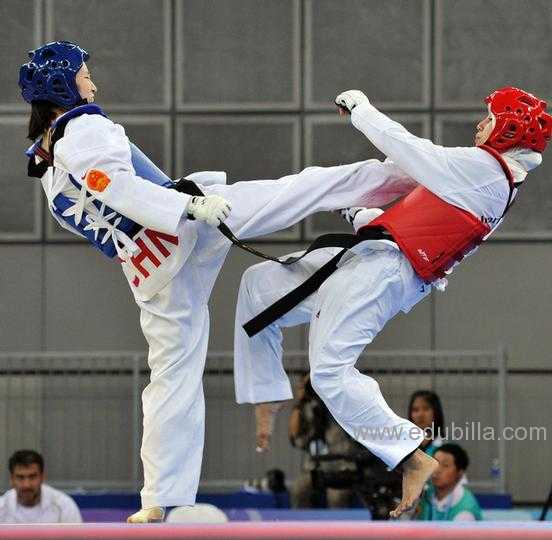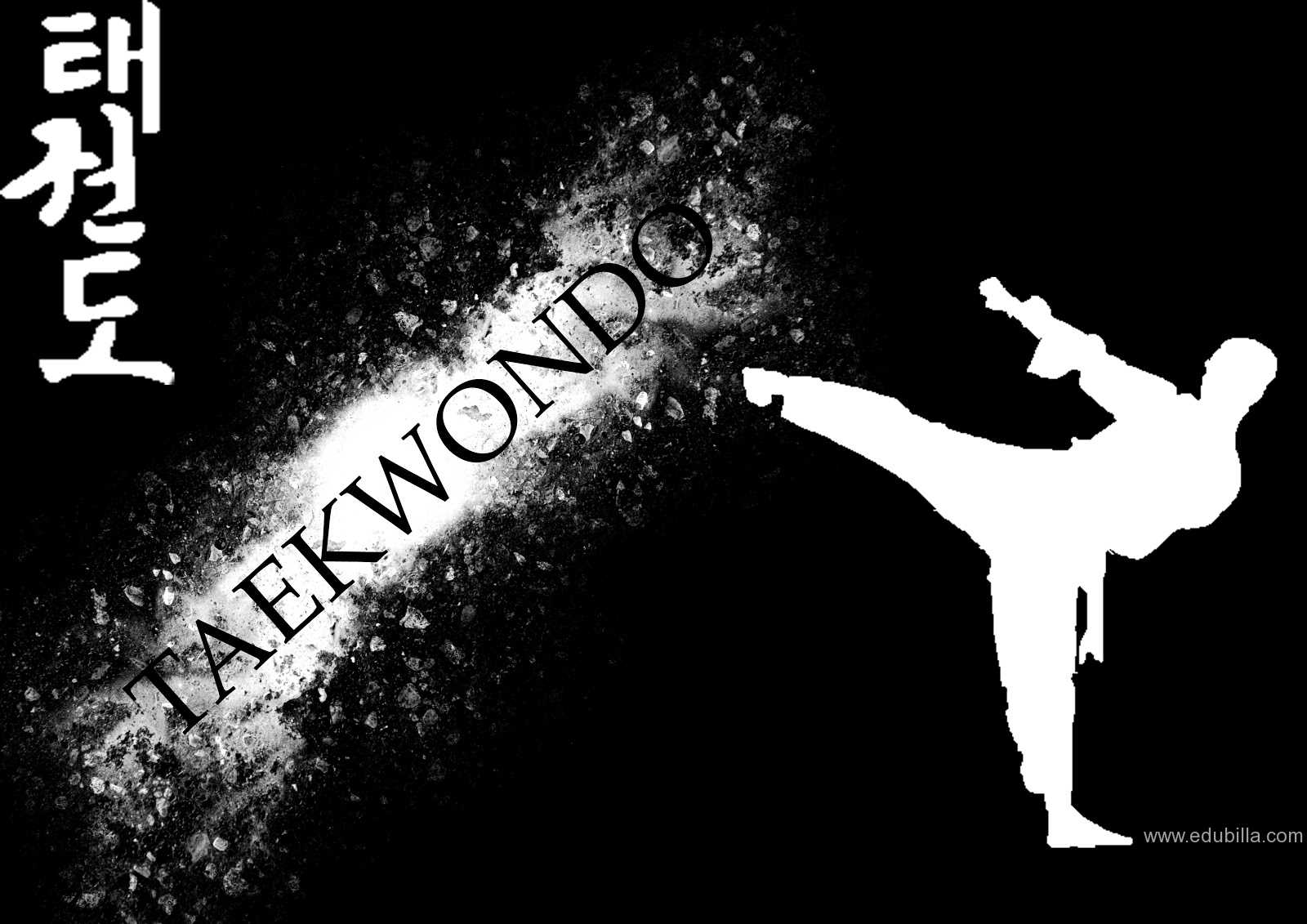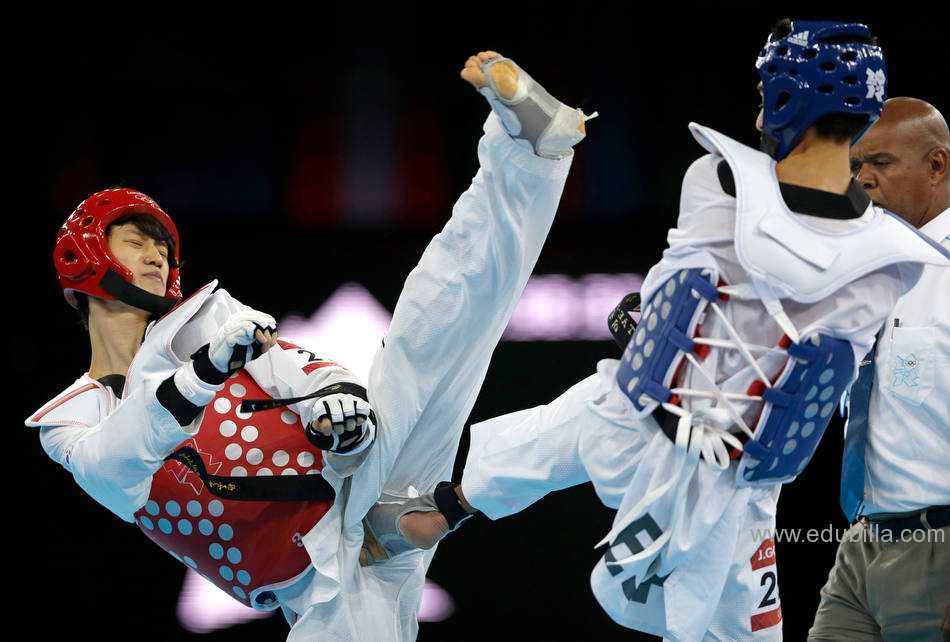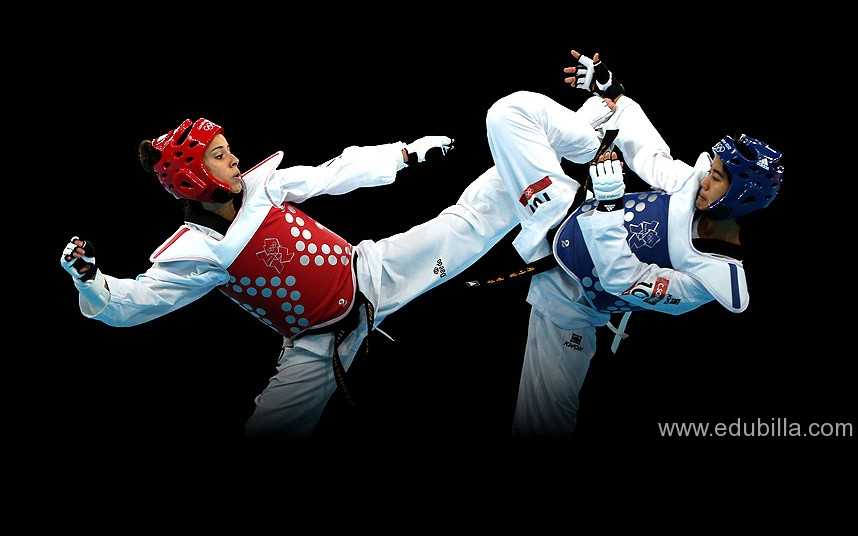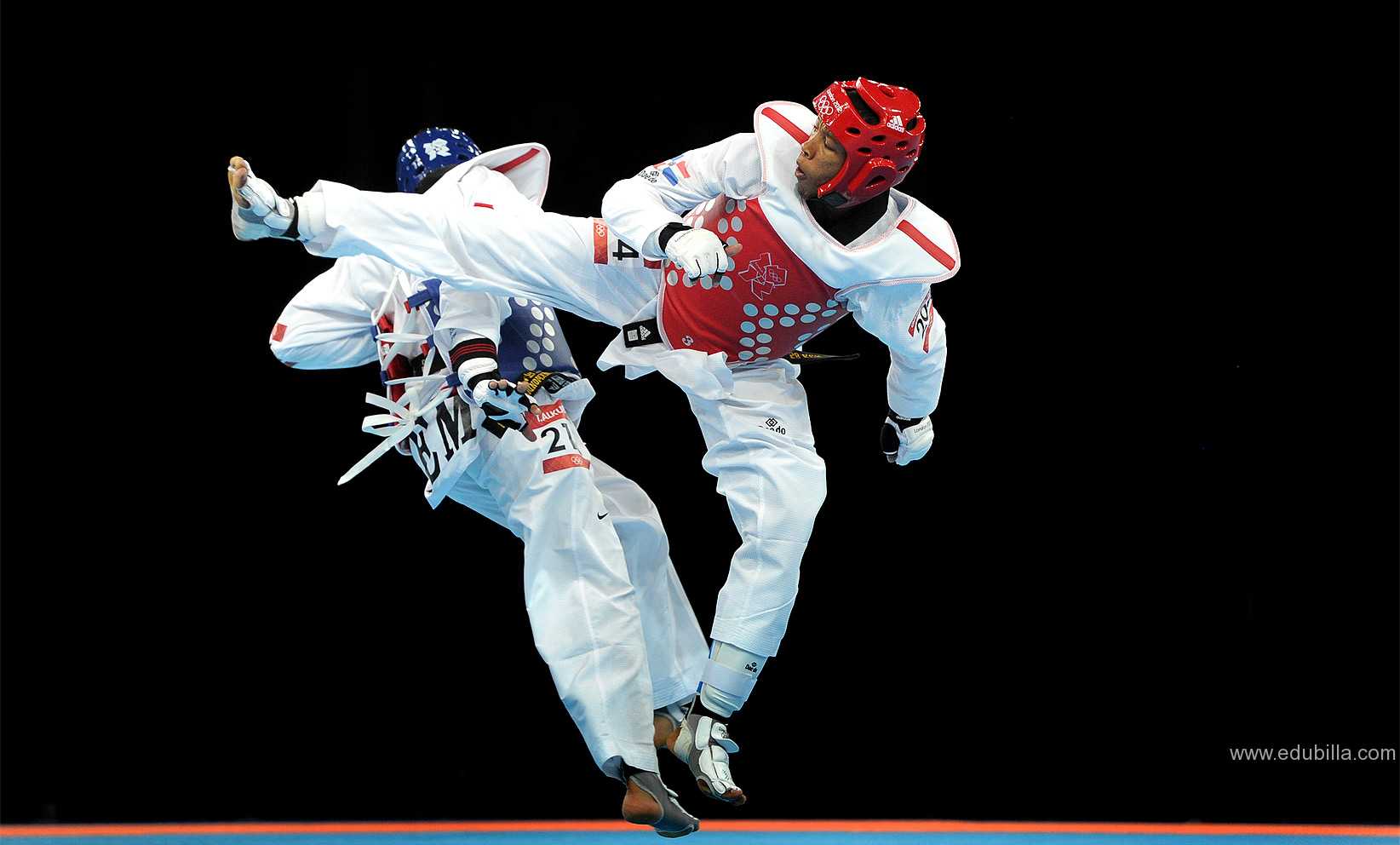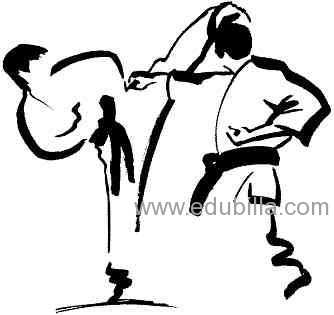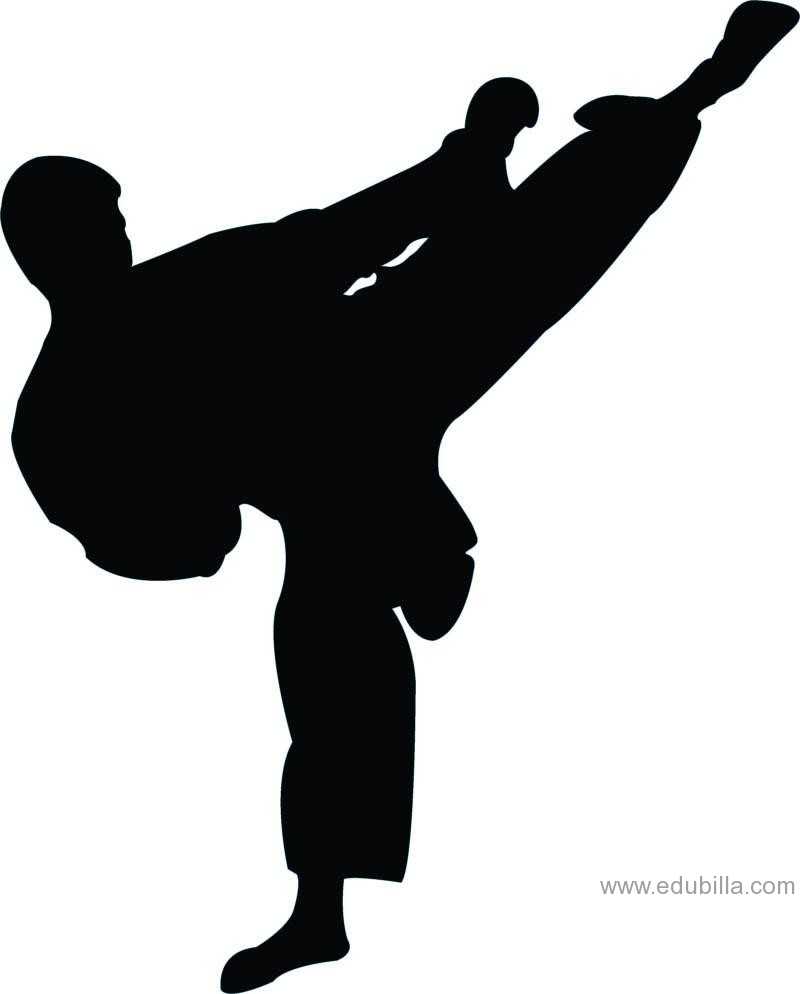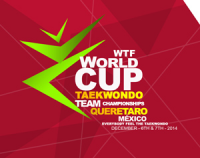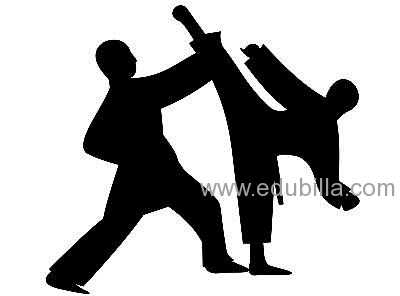
Overview Of Taekwondo
Taekwondo is a Korean martial art with a heavy emphasis on kicks. Taekwondo was developed during the 1940s and 1950s by various Korean martial artists, as a blend of the indigenous Korean fighting styles of taekkyeon, gwonbeop, and subak, with influence from foreign martial arts as well.
The oldest governing body for Taekwondo is the Korea Taekwondo Association (KTA) which was formed in 1959 by a collaborative effort by representatives from the nine original kwans, or martial arts schools, in Korea. The main international organizational bodies for Taekwondo today are the International Taekwon-Do Federation (ITF), founded by General Choi Hong Hi in 1966, and the World TaeKwonDo Federation (WTF), founded in 1973 by the KTA. Gyeorugi ), a type of full-contact sparring, has been an Olympic event since 1992. The body known for Taekwondo in the Olympics is the World Taekwondo Federation.
List of Taekwondo techniques:
Taekwondo techniques vary between schools and level and not all techniques are included. Techniques often combined into longer set Tul or Hyeong, again these vary from school to school.
1 Stances (Sogui)
Attention Stance
Closed Stance
Walking Stance
Back L-Stance
Parallel Stance
Rear Foot Stance
Sitting Stance
Fighting Stance
2 Hand attacks
3 Kicks (Chagi)
4 Blocks (Makgic burat)
5 Patterns, Poomsae, Hyung, Tul
6 Self defense
7 References
8 Further reading
Styles and organizations:
There are a number of major taekwondo styles as well as a few niche styles. Most styles are associated with a governing body or federation that defines the style. The major technical differences among taekwondo styles and organizations generally revolve around:
the patterns practiced by each style; these are sets of prescribed formal sequences of movements that demonstrate mastery of posture, positioning, and technique
differences in the sparring rules for competition; specifically, WTF-style competition (the style used in the Olympics) is generally more sport-oriented and less combat-oriented than other styles
martial arts philosophy.
Game Rules
The ancient martial art of taekwondo has its fair share of rules which may seem daunting to the white belt beginner. Here's our quick guide to the basic rules of taekwondo for those Kup graders just starting out.
General taekwondo points and rules
- The aim of taekwondo is to land as many kicks and blows as you can on your opponent in the allowed target areas.
- A taekwondo contest comprises three rounds of two minutes each – with a one-minute break between each round.
- The whole taekwondo contest area is a 10m square mat.
- Victory in a taekwondo bout can be achieved by knockout, by scoring the most points, or by default if the opponent is disqualified.
Scoring in taekwondo
- In taekwondo one point is scored for each legitimate strike on the body, and two points are given for kicks to the face. Competitors get an additional point for a knockdown.
- One referee and three judges oversee the contest, and a point is awarded only when two or more judges register a hit at the same time.
- Kicks to the head and body are only awarded points if they are landed with parts of the foot below the ankle.
- Blows to the body must be with the front of the index and middle finger knuckles of a tightly clenched fist if they are to be awarded points. Fighters are not allowed to punch to the head.
Penalties in taekwondo
- Penalties in taekwondo are awarded for offences such as grabbing, holding, feigning injury, pushing, and turning one's back on an opponent.
- The most serious taekwondo offence is ‘Gam-jeom’, which leads to one point being deducted. Examples of ‘Gam-jeom’ include throwing an opponent, deliberately stepping over the boundary line, pulling an opponent to the ground, and attacking the face with anything but the feet.
- If an opponent is knocked to the ground then the referee begins a 10 second count. A knockdown occurs if any part of a contestant's body touches the floor apart from the foot. There is a mandatory eight-second count before the referee decides whether the bout should continue.
- A knockdown becomes a knockout if a competitor cannot regain his or her feet by the count of ten seconds or if the referee decides he or she is unfit to continue at the end of an eight count.
- If a contest ends with the competitors level on points, then the contestant with the most points before penalties were deducted is the winner. If the scores are still level after this, then the referee awards the contest to the fighter he believes to have been the most willing to attack. The only exception to these rules occurs in the final of a competition, when a tied contest will go to an extra ‘sudden death’ round where the first to score a point wins. If no result is achieved during this round then the final decision once again lies with the referee.
Olympic competition rules for taekwondo
- The Olympic taekwondo competition takes the form of an elimination tournament to decide the gold and silver medals.
- After this initial tournament, two groups are then drawn up of all the competitors – except the semi-finalists – who have lost to either of the finalists. Another knockout process then produces two pool winners. Each pool winner then faces the beaten semi-finalist from the other side of the draw, and the winners of these two bouts compete for the bronze medal.
- The weight divisions for an Olympic taekwondo competition are as follows: Men – under 58kg; under 68kg; under 80kg; over 80kg. Women – under 49kg; under 57kg; under 67kg; over 67kg.
Equipments Need For Taekwondo
Belt
Coloured strap that fastens the upper part of the Dobok
Trunk protector
Used to protect parts of the upper body
Dobok
White trousers and jacket
Forearm and shin guards
Used to protect forearms and shins.
Head protector
Used to protect forearms and shins.
Groin guard
History Of Taekwondo
Taekwondo is a traditional Korean martial art, which means "the way of kicking and punching". In taekwondo, hands and feet can be used to overcome an opponent, but the trademark of the sport is its combination of kick movements.
Ancient History:
- 2333 B.C.: According to legend, Tangun founds a civilization on the Korean peninsula.
- 50 B.C.: Possible date of early cave drawings on walls of Koran caves, depicting men in Taekwondo poses.
- 57 B.C.: Kingdom of Silla is founded.
- 37 B.C.: Kingdom of Kogyryo is founded.
- 18 B.C.: Kingdom of Packje is founded, establishing the three-kingdom dynasty. The early martial art Subak spreads through Packje and Silla.
- 540-576 A.D.: Chin Heung, 24th king of Silla, commissions the formation of the Hwa Rang Do.
- 660 A.D.: Silla conquers Packje.
- 668 A.D. : Silla conquers Koguryo, uniting the peninsula. A time of peace ensues.
- 668 A.D. to 935 A.D.: The Hwa Rang Do of Silla practice Subak – and also develop the next form of Taekyon, which has more order and structure. Subak and Taekyon become popular with the general public, not just the military.
- 935 A.D.: General Wang Kon leads an insurrection against Koryo, overthrowing the government and founding the Koryo dynasty. Taekyon is required for all military training and is practiced by the general pubic as well.
- 1392: The Yi Dynasty (also called Chosun Dynasty) begins. This government promotes a Confucian philosophy, which downplays martial arts. Although the general public practices Taekyon and Subak, some instructors flee to other Asian countries. The name of Taekyon is sometimes replaced by the name Soo Back Ki (hand striking techniques).
Japanese Occupation:
- 1909: Japan conquers Korea and outlaws all Korean culture, including the practice of any native martial art. Taekyon instructors practice in hiding or flee to other countries, where they are influenced by other martial arts. Han Il Dong and his student, Choi Hong Hi, practice Taekyon in secret.
- 1945: At the end of World War II, Korea is liberated from Japanese occupation. Korean martial arts are rejuvenated, but lack consistency and organization. Many schools (kwans) practice forms and kicks containing Japanese influences.
Modern History:
- 1945: Grand Master Byung Jick Ro opens Sang Moo Kwan school in an archery training building. The school is not successful.
- 1945: Master Won-Kuk Lee founds the Chung do Kwan style.
- 1946: Hwang Kee founds a martial art called Moo Duk Kwan, which later splits into Taekwondo style and Tang Soo Do style.
- 1946: Taekyon is taught to police in Seoul, Korea.
- 1946: Master Bryng Jick Ro opens another Sang Moo Kwan school, which closes during the Korean War.
- 1946: Sang Sup Chun founds Yun Moo Kwan, the name of which is later changed to Ji Do Kwan.
- 1946: Yon Kue Pyang founds Chi Do Kwan.
- 1946: First Lieutenant Choi Hong Hi teaches his style of Taekyon to the military under his command.
- 1950-1953: The Korean War divides the country in two.
- 1952: President Syngman Rhee of South Korea watches a 30-minute demonstration of Taekyon and orders all soldiers to be trained in Taekyon. The responsibility falls to Captain Choi Hong Hi.
- 1953: General Choi Hong Hi founds Oh Do Kwan and serves as its president.
- 1953: Kang Duk Kwan is founded by Master Hong Jong Pyo and Master Park Chul Hee.
- 1953: Master Byrung Jick Ro opens another Sang Moo Kwan school in Seoul, Korea and is successful.
- 1953: The Korean Taekwondo Association (K.T.A.), the precursor to the World Taekwondo Federation, is formed by nine kwans.
- 1954: Jung Do Kwan is founded by Lee Yong Woo.
- 1954: Han Moo Kwan is founded by Master Lee Kyo Yoon.
- 1955: General Choi Hong Hi trains all the Korean military in his version of Taekyon.
- 1955: The Chung Do Kwan conference is organized founded by Master Won Kook Lee.
- 1955: Nine kwans (schools) of Korean martial arts, including Taekyon, agree to combine the arts and rename the Korean martial art Tae Soo Do.
- 1957: General Choi recommends to the kwans that the name be changed to Tae Kwon Do. Adopted by the kwans.
- 1958: Master Hwang Kee Hwang removes the kwan Tang Soo Do Moo Duck Kwan from the Tae Kwon Do umbrella. He forms the Korean martial art of Tang Soo Do.
- 1960: Organizations by the K.T.A. begin to dispatch Korean masters of Taekwondo to other countries to hold demonstrations and to open dojangs (schools).
- 1960: General Choi sends a Taekwondo team from South Korea to North Korea on a goodwill mission. The South Korean government and general public are outraged and demand his resignation.
- 1963: Master Duk-Sung Son (Chung Do Kwan) comes to New York City, United States, and founds the World Taekwondo Association.
- 1965: General Choi retires from the Korean military to dedicate his life to developing Taekwondo.
- 1966: General Choi founds the International Taekwondo Federation (ITF) with support from Vietnam, West Germany, Malaysia, Turkey, Italy, United Arab Republic, Taiwan, and United States. The ITF is a separate organization from the Korean Taekwondo Association.
- 1967: The US Taekwondo Association is formed.
- 1968: General Choi meets with Master Haeung Ung Lee and teaches him the forms.
- 1969: American Taekwondo Association is founded by Master Haeung Lee, based in Omaha, Nebraska.
- 1971: Dr Un Young Kim is elected president of the K.T.A.
- 1971: President Chung Hee Park of South Korea announces that Taekwondo will become the national sport of Korea and allocates funds for the promotion and building of Kukkiwon (WTF headquarters).
- 1972: Kukkiwon building Is completed.
- 1972: General Choi leaves South Korea, moving ITF Headquarters to Toronto, Canada.
- 1973: The World Taekwondo Federation (WTF) is established, and dissolves all associations with the ITF. Kukkiwon becomes the official headquarters and training facility of the WTF. Chung Do Kwan aligns itself with the WTF.
- 1973: World Taekwondo Championships are held in Kukkiwon, with 19 countries participating.
- 1974: US Taekwondo Association is renamed the US Taekwondo Federation.
- 1975: The WTF affiliates with the GAISF (General Association of International Sports Federation).
- 1976: The International Military Sports Council (CISM) adopts WTF Taekwondo into the World Military Championships.
- 1976: The European Taekwondo’s Union’s inaugural meeting held in Spain with the first European Taekwondo Championships.
- 1976: The WTF English quarterly magazine was first published. The name changes to WTF Taekwondo in 1981.
- 1976: First meeting of the Asian Taekwondo Union in Melbourne, Australia.
- 1977: The nine different kwans (Chung Do Kwan, Ji Do Kwan, Moo Duk Kwan, Chang Moo Kwan, Soo Moo Kwan, Han Moo Kwan, Oh Do Kwan, Jung Do Kwan, and Kang Du Won) recognize the Kukkiwon and WTF as the promotional body of Taekwondo, and agree to the black belt certification process and certificates.
- 1978: Pan American Taekwondo Union holds its first Pan American Taekwondo Championships in Mexico City, Mexico.
- 1979: African Taekwondo Union holds first African Taekwondo Championships.
- 1980: The international Olympic Committee (IOC) recognizes the WTF at the 83rd session in Moscow, Soviet Union.
- 1981: WTF Taekwondo is accepted as a World Games event.
- 1982: ITF’s General Choi attempts to make ITF Taekwondo an Olympic sport by reaching out to the International Olympic Committee.
- 1983: WTF Taekwondo is accepted as a Pan American Games event.
- 1984: The ITF moves its headquarters to Vienna, Austria.
- 1984: General Choi and the ITF publish Encyclopedia of Taekwondo.
- 1986: The Federation International du Sport Universitaire (FISU) adopts Taekwondo as an event in the World University Championships.
- 1986: ITF sends demonstration team to China, a country which eventually embraces Taekwondo.
- 1988: Taekwondo is an exhibition sport in the 1988 Seoul Olympic Games.
- 1990: Central American Sports Organization adopts Taekwondo as an official sport in the Central American Games.
- 1991: The Goodwill Games, Inc,, adopts WTF Taekwondo as an official sport for the third World Games.
- 1992: Taekwondo is again an exhibition sport at the 1992 Barcelona Olympic Games.
- 1992: Taekwondo is adopted by the Olympic Council of Asia as an official sport for the Asian Games.
- 1994: WTF Taekwondo is adopted as a full participatory sport for the 2004 Sidney Olympic Games.
- 1996: WTF Taekwondo is a exhibition event in the Atlanta Olympics.
- 1997: Taekwondo is adopted as an official sport for the second World Military Games, in Zagreb, Croatia.
- 1998: The general assembly of the Supreme Council of Sports in Africa (SCSA) includes Taekwondo as a official sport in the seventh All African Games.
- 2000: The IOC committee confirms that Taekwondo will be an official sport in the 2004 Athens Olympic Games.
- 2002: Membership of countries affiliated with the WTF reaches 168.
- 2002: General Choi, “Father of Taekwondo,” dies of stomach cancer.
- 2002: The selection of a successor to General Choi is controversial. The ITF splits into three branches: ITF Vienna, headed by Tran Trieu Quan (whom General Choi had named as his successor); ITF North Korea, headed by Chang Ung; and ITF Canada, headed by Choi Jung Hwa (General Choi’s son).
- 2004: Amidst charges of corruption, WTF President Kim resigns. Dr. Sun Jae Park is elected as acting president.
- 2004: Dr. Chung Won Choue is elected as the new president of the WTF.
- 2004: Taekwondo is an official sport in the Athens Olympic Games.
- 2005: WTF Taekwondo is declared an official sport for the 2012 London Olympic Games.
- 2006: The World Taekwondo Federation includes affiliations of 182 different countries
- 2008:Taekwondo participates as a official sport in the Beijing, China 2008 Olympics games.
- 2012: Taekwondo participates as an official sport for the London, England, 2012 Olympic games.
Origin Of Taekwondo
The name Taekwondo is derived from the Korean word "Tae" meaning foot, "Kwon" meaning fist and "Do" meaning way of. So, literally Taekwondo means "the way of the foot and fist". The name Taekwondo, however, has only been used since 1955 while the arts' roots began 2,300 years ago in Korea. Known as a martial art and way of life, the evolution of Taekwondo was a direct result of the happenings in Korea long ago, and knowledge of the history is an important step in understanding Taekwondo.
First Taekwondo School:
The first Taekwondo school (Kwan) was started in Yong Chun, Seoul, Korea in 1945. Many different school were opened from 1945 through 1960. Each school claimed to teach the traditional Korean martial art, but each school emphasized a different aspect of Taek Kyon/Subak. This caused different names to emerge from each system, some of them were: Soo Bahk Do, Kwon Bop, Kong Soo Do, Tae Soo Do and Kang Soo Do.
First Taekwondo Book :
The first widely distributed book on Taekwondo was during the Yi dynasty (1397 to 1907). This was the first time that Subak was intended to be taught to the general public, in previous years the knowledge was limited to the military. During the second half of the Yi dynasty, political conflicts and the choice to use debate instead of military action almost lead to the extinction of Subak. The emphasis of the art was changed back to that of recreational and physical fitness. The lack of interest caused Subak as an art, to become fragmented and scarcely practiced throughout the country.
First Appearance:
Taekwondo first appeared in the Koguryo kingdom, it is the Silla's Hwarang warriors that are credited with the growth and spread of Taekwondo throughout Korea. Silla was the smallest of the three kingdoms and was always under attack by Japanese Pirates. Silla got help from King Gwanggaeto and his soldiers from the Koguryo kingdom to drive out the pirates.
Choi Hong Hi:
In 1957, Choi Hong Hi advocated the use of the name Tae Kwon Do, i.e. replacing su "hand" by kwon "fist", the term also used for "martial arts" in Chinese (pinyin quán). The new name was initially slow to catch on among the leaders of the kwans. In 1959 the Korea Taekwondo Association (KTA) was established to facilitate the unification of Korean martial arts. In 1966 Choi established the International Taekwon-Do Federation (ITF) as a separate governing body devoted to institutionalizing a common style of taekwondo.
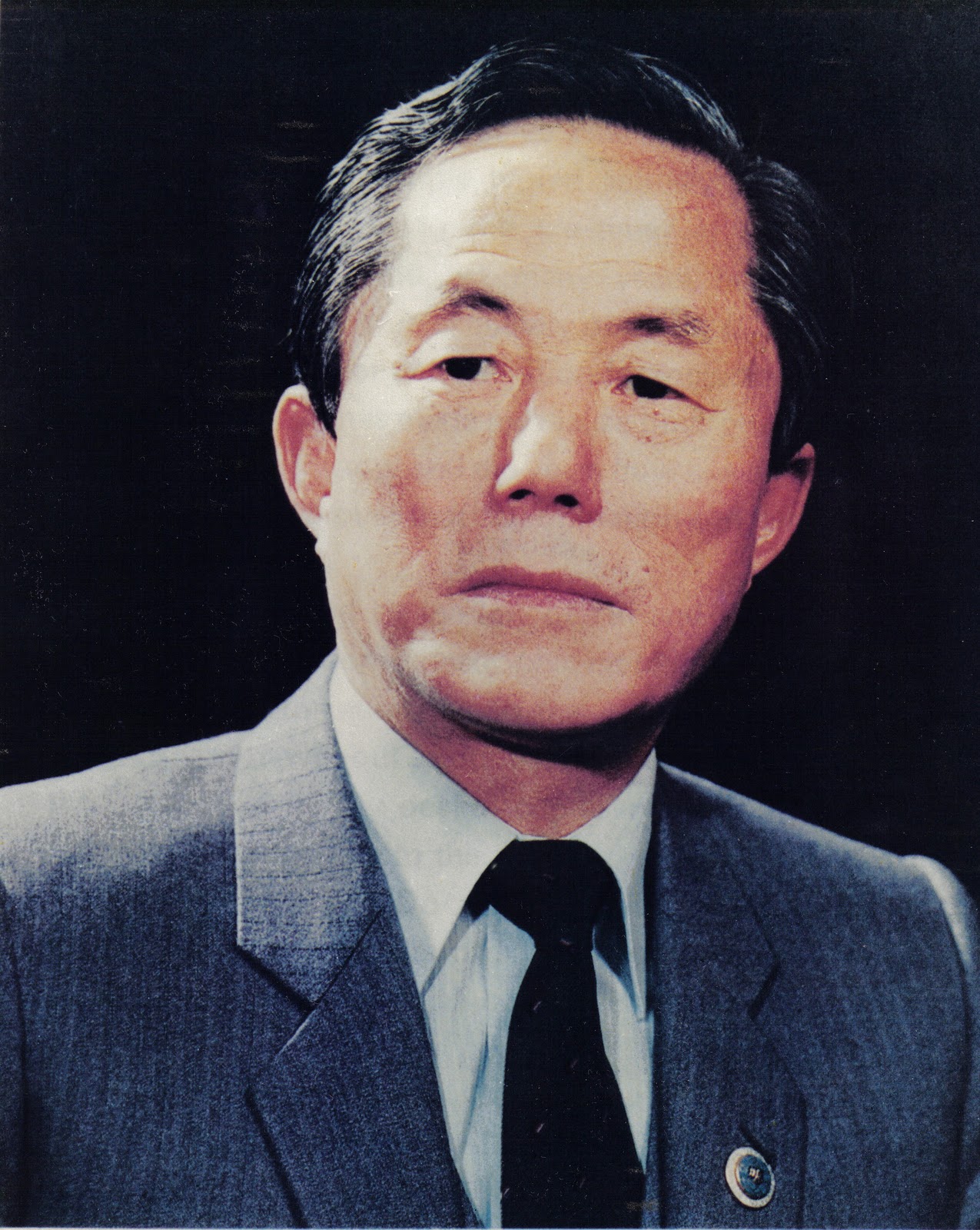
Choi Hong Hi also known as General Choi, was a South Korean army general and martial artist who is a controversial figure in the history of the Korean martial art of taekwondo.Choi is regarded by many as the 'Founder of Taekwondo'—most often by International Taekwon-Do Federation (ITF) organizations.Others, such as World Taekwondo Federation (WTF) organizations, portray Choi as either an unimportant or a dishonorable figure in taekwondo history, whether by omitting him from their versions of taekwondo history or through explicit statements
Olympic history:
Taekwondo is one of the two Asian martial arts included on the Olympic programme. Taekwondo made its debut as a demonstration Olympic sport at the 1988 Seoul Games, and became an official medal sport at the 2000 Sydney Games.
A Long History:
The origin of taekwondo dates back to Korea's Three-Kingdom era (c.50 BC) when Silla Dynasty warriors, the Hwarang, began to develop a martial art - Taekkyon ("foot-hand").
Governing Bodies
Korea Taekwondo Association (KTA):
Korea Taekwondo Association, originally the Korea Taekwondo Association, is the first taekwondo organisation. It was founded in 1959,although official South Korean sources give 1961 as its year of establishment. In 1966, some members of the KTA, led by H. H. Choi, broke off from the KTA and formed the International Taekwon-Do Federation (ITF). The Kukkiwon and the World Taekwondo Federation (WTF) were created by the KTA in the early 1970s. The KTA sits under the Korea Sports Council, is aligned with Kukkiwon, and is a Member National Association (MNA) of the WTF.Its goal is to promote the martial art taekwondo as a national sport within South Korea.
History of KTA:
- The KTA's history has been marked by political difficulties. In 1959, H. H. Choi was the first President of the KTA and Byung Jik Ro (listed as "No" by Park, 1993) and Kae Byung Yun were the inaugural Vice-Presidents.When H. H. Choi was appointed as South Korea's ambassador to Malaysia in 1962, Myung Shin Choi became the second President of the KTA.In the early 1960s, the KTA was renamed as the Korea Taesoodo Association, and then to the current form in 1965.
- During the 1960s, the KTA assembled the twelve original masters of taekwondo to promote taekwondo throughout the world. Choi headed a demonstration tour of 18 countries in 1965;this was one of many demonstration missions that eventually covered every continent.Choi again became President in 1965, but was forced to resign after a year, reportedly due to his unpopular authoritarian leadership style.He went on to establish the International Taekwon-Do Federation (ITF) the following year. B. J. Ro of the Song Moo Kwan, who had been one of the KTA's inaugural Vice-Presidents, became the fourth President.
- In 1967, Yong Chae Kim of the Kang Duk Kwan became the fifth President of the KTA.That same year, the KTA created new black belt forms, including Koryo, Keumgang, Taebaek, Pyongwon, Shipjin, Jittae, Cheongkwon, Hansoo, and Ilyo.On 29 January 1971, Un Yong Kim became the sixth President of the KTA, and continued in the position in 1973. The KTA's leadership would remain stable for the next 20 years or so. In 1989, Chong Soo Hong from the Moo Duk Kwan was appointed Vice-President of the KTA.
- The early 2000s were a time of trouble for the KTA leadership. One source states that Un Yong Kim resigned from the KTA presidency in 2001,while other sources state that in 1997, Pil Gon Rhee was already in place as President of the KTA.In any case, Kim presided over the organisation for around 20 years. In March 2002, Cheon Seo Koo was elected President of the KTA,and apparently held that position until at least 2004,though news sources have reported that he was arrested in late 2003.
- In early 2008, Jung Gil Kim was President of the KTA.On 11 June 2008, Joon Pyo Hong was elected as the 24th President of the KTA,and he continued in the position in 2009.
To Visit KTA Click Here
International Taekwon-Do Federation
International Taekwon-Do Federation (ITF) is an international taekwondo organisation founded on March 22, 1966, by Choi Hong Hi in Seoul, South Korea.The ITF was founded to promote and encourage the growth of the Korean martial art of Taekwon-Do.
The ITF's main functions include coordinating and approving tournaments and seminars, setting standards for teaching (patterns, sparring, destruction), collaborating with affiliated member organizations, and providing services members in regards to rank and certifications.
To Visit ITF Click Here
World Taekwondo Federation
The World Taekwondo Federation is the International Federation (IF) governing the sport of Taekwondo and is a member of the Association of Summer Olympic International Federations (ASOIF). The WTF recognizes national Taekwondo governing bodies recognized by the NOCs in the pertinent country as its members.
Established: May 28, 1973
No. of Member National Associations: 206
Location: 5th Fl., Kolon Bldg., 15 Hyoja-ro, Jongno-gu, Seoul, Korea, 110-040
President: Dr. Chungwon CHOUE (re-elected on April. 12, 2005 / Oct. 13, 2009/ July 14, 2013)
Secretary General: Mr. Hoss Rafaty
Affiliation to SportAccord (GAISF): October 8, 1975
IOC Recognition: July 17, 1980 (83rd IOC Session in Moscow)
Affiliation to ASOIF: February 15, 1995
Olympic Games Demonstration Sport: 1988 Seoul Olympic Games & 1992 Barcelona Olympic Games
Official Olympic Sport: Sydney 2000 Olympic Games, September 4, 1994 (103rd IOC Session in Paris)
Confirmation of Taekwondo as an Official Sport: for Athens 2004 Olympic Games, December 11-13, 2000 (IOC EB Meeting in Lausanne)
Expansion of Taekwondo quota at Athens 2004 Olympic Games to 124 in eight weight categories, respective four weight classes for men and women, Sep. 18-20, 2001 (IOC EB Meeting in Lausanne)
Feb. 5-7, 2006: IOC Executive Board decided at its meeting in Turin, Italy to expand the number of taekwondo entry in Beijing 2008 Olympic Games from 124 to 128 (two males and two females were added in consideration of the new establishment of Oceania Taekwondo Union).
IOC Executive Board decided the number of sports programs of the 2008 Beijing Olympic Games to be 27, including Taekwondo. The 114th IOC Session held in Mexico City, Mexico on November 29, 2002 also confirmed inclusion of Taekwondo in the Bejing 2008 Olympic Games.
IOC reviewed the Olympic programme for 2012 London, Taekwondo was voted to retain in the Olympic Programme of the London 2012 Olympic Games at its 117th Session in Singapore on July 8, 2005.
IOC selected 26 core sports for 2016 Rio Olympic Games, including taekwondo at its 121st Session in Copenhagen on Oct. 2-9, 2009.
IOC confirmed taekwondo as one of the 25 core sports for 2020 Tokyo Olympic Games at its 125th Session in Buenos Aires on Sept. 7-10, 2013
International Paralympic Committee (IPC) Governing Board granted 'IPC-recognized IF' status to the WTF on Oct. 16, 2013.
Awards Related To Taekwondo
Annual National Taekwondo Awards:
Presented by Taekwondo Board of India (National Taekwondo Headquarter) for excellence in Taekwondo Sports & coaching.First Time in INDIA! TAEKWONDO BOARD OF INDIA (National Taekwondo Headquarter) Presented Annual National/State/District Awards for Athletes and Coaches.
USA Taekwondo Awards:
USA Taekwondo recognizes individuals and clubs who have gone above and beyond the call of duty in many areas.
categories:
- Senior Male Athlete of the Year
- Senior Female Athlete of the Year
- Male Poomsae Athlete of the Year
- Female Poomsae Athlete of the Year
- Junior Male Athlete of the Year
- Junior Female Athlete of the Year
- Cadet Male Athlete of the Year
- Cadet Female of the Year
- Club of the Year
- Coach(es) of the Year
- Referee of the Year
- Volunteer of the Year
- Family of the Year
- Director’s Leadership Award
- USA Taekwondo Special Recognition Awards
BANQUET AND HALL OF FAME AWARDS
These Hall of Fame awards are given each year to honor Taekwondo's finest, in order to preserve our great heritage through a recorded recognition of the contribution that men and women.
International Taekwon-Do - Awards:
Award Categories:
- Dan Student of the Year
- Gup Student of the Year
- Instructor of the Year
- Club of the Year
- Junior sportsperson
- Senior sportsperson
Sample Documents Of Taekwondo
-Pele





